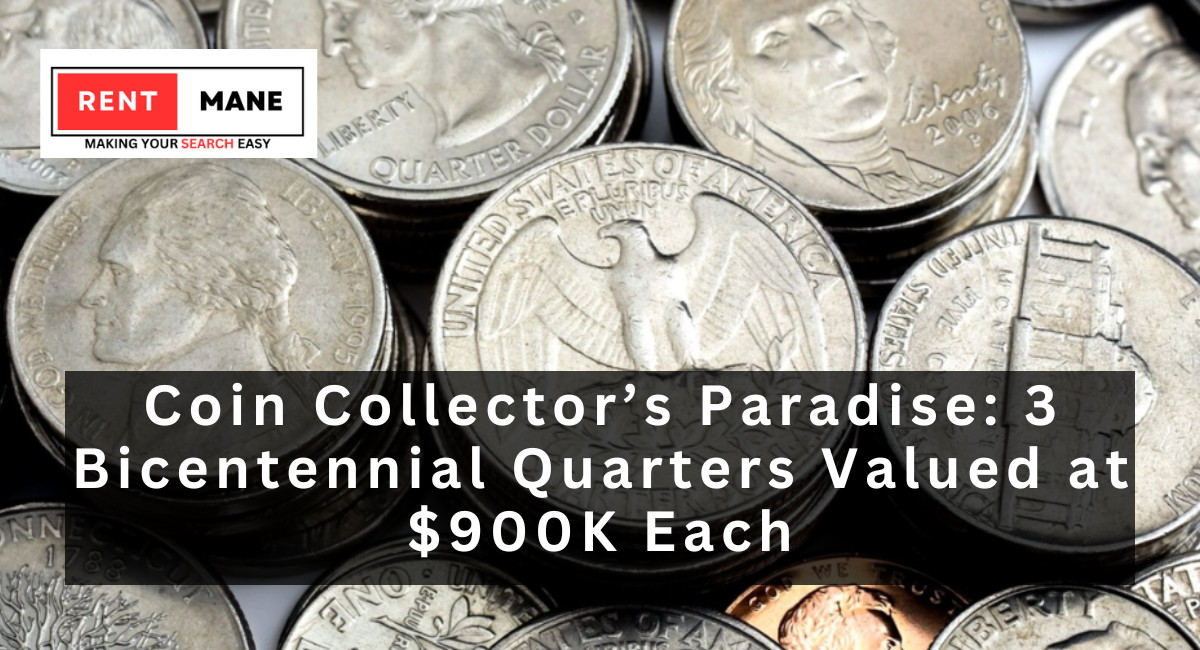The 1976 Bicentennial Quarter has become a coveted treasure for avid coin collectors and enthusiasts. Minted to celebrate the 200th anniversary of the United States, these quarters are distinctively designed, showcasing a colonial drummer on their reverse side.
While most of these coins hold little more than their face value, three exceptional variants have soared in worth, reaching astounding values of up to $900,000. In this article, we’ll explore these extraordinary coins and offer tips on how you might discover one in your change.
The Silver-Clad Bicentennial Quarter: A Rare Find
The most renowned of the valuable Bicentennial quarters is the 40% silver-clad version. These quarters were primarily intended for unique collector sets, but a few found their way into everyday circulation due to a minting error.
The value of these coins lies in their silver content and unintentional release into general circulation. In pristine, uncirculated condition, the silver-clad Bicentennial Quarter can command a staggering price of up to $900,000.
What Makes It Valuable?
The rarity of the silver-clad version stems from its limited production and collectors’ high demand. Most Bicentennial quarters in circulation are made from a copper-nickel alloy, which contributes to their low value. The silver-clad variants are much harder to find, making them highly sought after by collectors who understand their significance.
Identifying the Silver-Clad Quarter
If you’re looking for this rare coin, check for a few key features. First, examine the edges of the quarter. Silver quarters have a distinctive look—compared to their copper-nickel counterparts, they possess a more radiant shine and a slightly different weight. If the quarter appears shinier than the others and has a silver hue, it may be worth further investigation.
The Double-Die Obverse Bicentennial Quarter
Another extremely valuable variant is the double-die obverse Bicentennial quarter. A double-die error occurs when the coin’s design is struck twice, resulting in a noticeable doubling effect on prominent features.
For this specific quarter, the doubling can be seen on critical elements such as George Washington’s profile and inscriptions.
Value and Demand
Coins with this error, especially in excellent condition, can fetch upwards of $900,000 at auction. Collectors are always on the lookout for these unique pieces, as the doubling adds to their rarity and historical significance.
Spotting a Double-Die Obverse
To identify a double-die obverse quarter, look closely at the details of Washington’s profile and the text surrounding it. If you see an apparent doubling effect, that’s a sign of the error. Using a magnifying glass can help you catch the subtle details more easily. Remember that the more precise the doubling, the more valuable the coin will likely be.
The Double-Die Reverse Bicentennial Quarter
Like the double-die obverse, the double-die reverse Bicentennial quarter features the same striking error but on the back side of the coin. This version showcases a doubled image of the colonial drummer and the inscriptions, making it highly desirable among collectors.
Why Collectors Value This Coin
Like its obverse counterpart, the double-die reverse coin can reach around $900,000 if in uncirculated condition. The demand for these coins is driven by their uniqueness and the thrill of discovering a rare piece of American history.
How to Identify the Double-Die Reverse
To check for a double-die reverse quarter, turn the coin over and examine the image of the colonial drummer. Look for any doubling in the design or the inscriptions around it. A clear, pronounced doubling can significantly increase the coin’s value, making it a prime target for collectors.
Tips for Finding Rare Bicentennial Quarters
The thrill of coin collecting often lies in the hunt. While these rare Bicentennial quarters are circulating, finding one requires patience and careful searching. Here are some tips to help you in your quest:
1. Check Your Change Regularly
Make it a habit to examine your pocket change. You never know when a rare quarter might pop up. Please pay special attention to the Bicentennial quarters you want to look out for.
2. Look for Silver Edges
When you encounter a Bicentennial quarter, inspect the edges for silver. It could be the silver-clad version if it appears shinier than the others and has a different weight.
3. Inspect for Doubling
Use a magnifying glass to examine the details on both sides of the coin closely. Look for any signs of doubling, which could indicate a double-die error.
4. Visit Coin Shops and Shows
Engage with local coin shops or attend coin shows. Many experienced collectors and dealers can provide valuable insights into these rare quarters; you might even come across one for sale.
5. Network with Other Collectors
Join coin-collecting groups or forums where enthusiasts share their finds and experiences. Networking with other collectors can provide you with tips and leads on where to find rare coins.
Conclusion:
The search for rare Bicentennial quarters is an exhilarating journey for coin collectors. With values reaching an astounding $900,000 for these unique coins, keeping a close eye on your change could lead to an unexpected windfall.
Whether inspecting your pocket change or engaging with fellow collectors, the excitement of potentially finding a rare coin adds a layer of joy to this timeless hobby. So, grab your magnifying glass and start searching—you never know what treasures await you!
READ MORE: The $120,000 Quest: Hunting for Rare Bicentennial Quarters in Your Change

